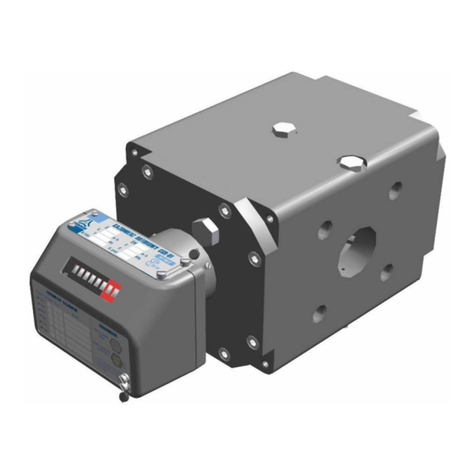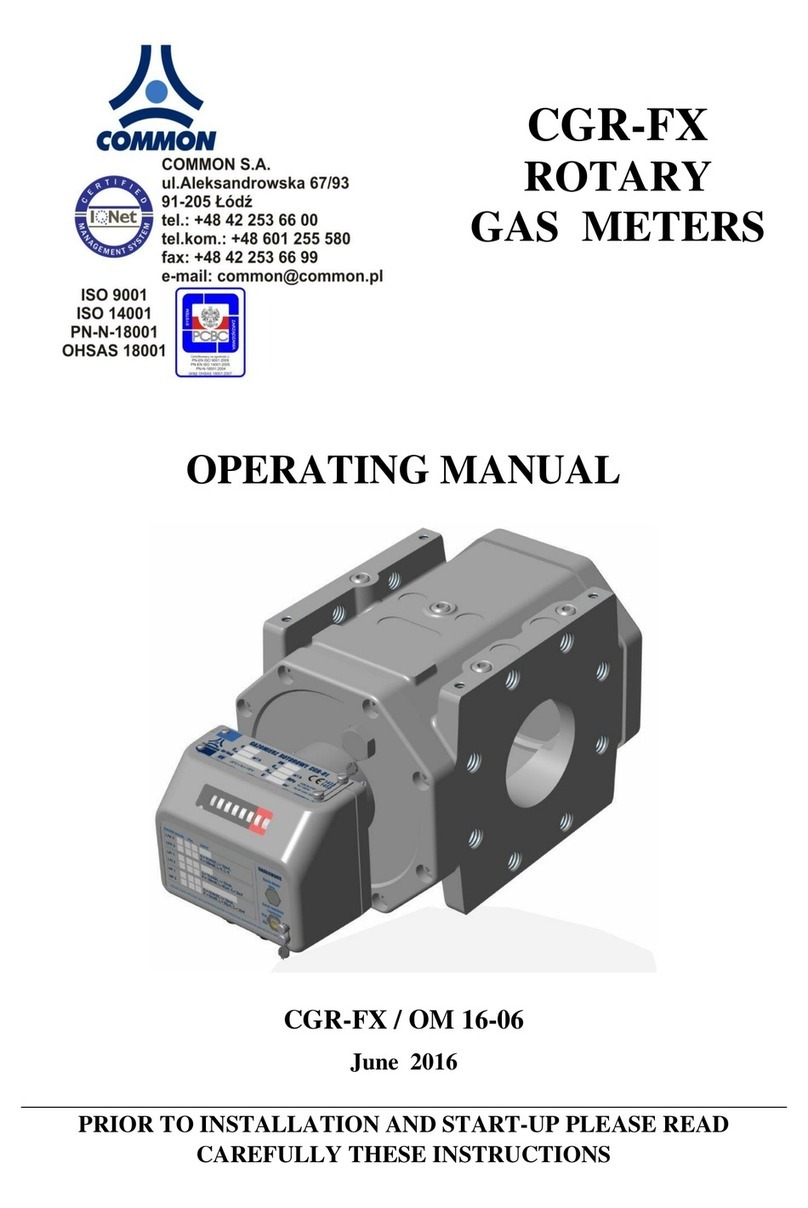
CGR/IO12/MID 2
I. INTENDED USE AND CONDITIONS OF USE
Intended use
Rotary gas meters CGR-01 are electromechanical pressure devices designed to measure the
volume of gas flowing through a system. In standard embodiment, the gas meters may be
used at sites with probable occurrence of explosive atmospheres formed as mixtures of gases
classified as explosion groups IIA and IIB (and group IIC for the special purpose
embodiment) with air. Table 1 lists the physical properties of the most common gases and gas
mixtures that may be measured with CGR-01 gas meters.
The rotary gas meters can be used both indoors in stabilized temperature conditions and
outdoors (open location); however, in the latter case, it is recommended that the gas meter is
shielded from direct exposure to atmospheric factors (metal containers, casings, roofs, shields
etc.) Ambient temperature range from –25°C to +70°C. System gas temperature range from
—20°C to +60°C. Storage temperature range from –30°C to +70°C. Maximum working
pressure pmax = 1.6 MPa.
Conditions for use
1. Compliance with Directive 2004/22/WE (MID) :
-certificate PL –MI 002 –1450CL0002
-CE marking 1450, Oil and Gas Institute
-ambient temperature range –25° C Ta + 70° C
-gas temperature range from –20° C to + 60° C
-storage temperature range from -30o C to + 70o C
-maximum working pressure pmax = 1.6 MPa
-mechanical environment class M2
-electromagnetic environment class E2
--metrological parameters Table 2.
-metrological accuracy class 1.0
-operational position HV,
- harmonized standards: PN-EN 12480:2005 (EN 12480:2002),
PN-EN 12480:2005/A1:2008 (EN 12480:2002/A1:2006),
2. Compliance with Directive 94/9/WE (ATEX) :
-certificate KDB 04ATEX034,
-CE marking 1453, Central Mining Institute, Experimental Mine
”Barbara”.
-operation conditions standard embodiment II 2G Ex ia IIB T5 Gb
special-purpose embodiment II 2G Ex ia IIC T5 Gb
- meter case index of protection IP66/IP67,
- harmonized standards: PN-EN 13463-1:2010 (EN 13463-1:2009),
PN-EN 60079-0:2009 (EN 60079-0:2009),
PN-EN 60079-11:2010 (EN 60079-11:2007).
3. Compliance with Directive 97/23/WE (PED) :
-certificate 37286/JN/001/04,
-CE marking 1433, Office of Technical Inspection
-compliance with technical specification WUDT/UC/2003.






























